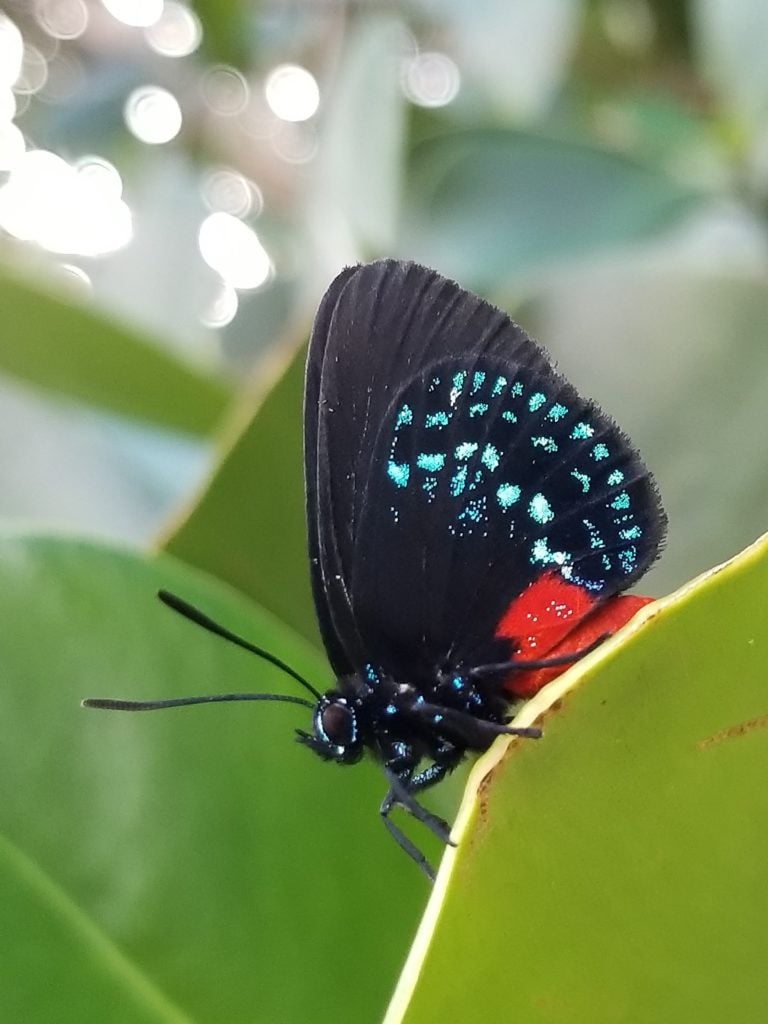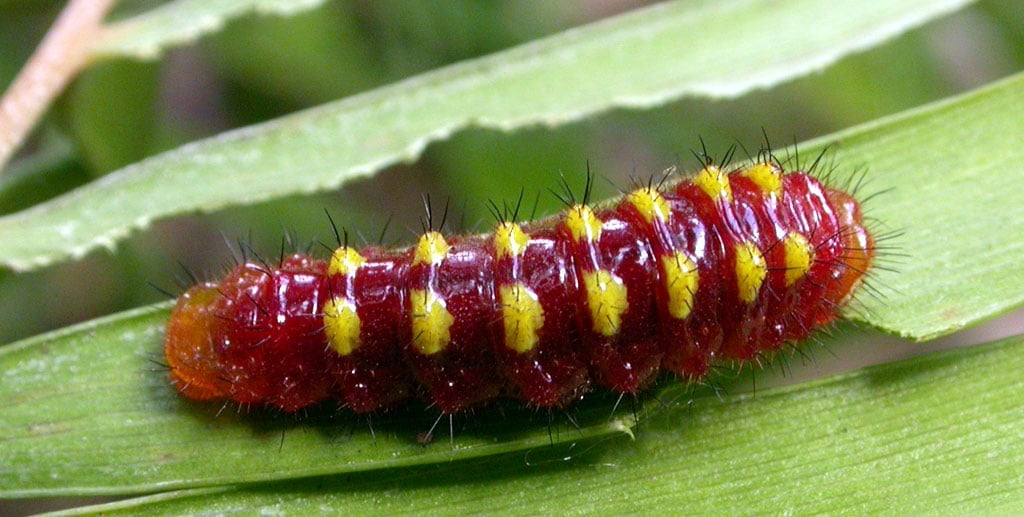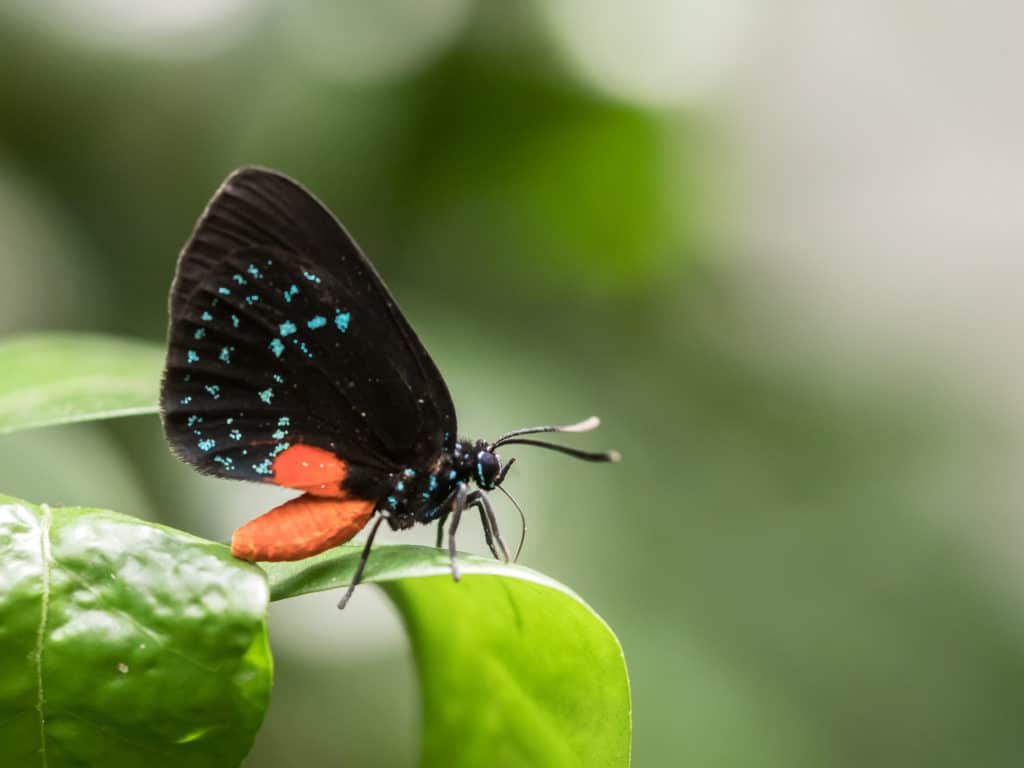There’s a group of butterflies known as the Atala butterfly and its five closest relatives have been known to be poisonous. A poisonous butterfly isn’t something one typically thinks of when looking at these beautiful winged creatures, but this fairly recent discovery has scientists studying the caterpillars that eventually turned into these poisonous butterflies.

When these butterflies were caterpillars they were known to eat a plant called cycads. These plants have been around since the dinosaur age and contain a toxin that is potent to the liver. This live toxin is called cycasin. The caterpillars have been eating this plant for years upon years and now have become a rather poisonous butterfly species.
Since these butterflies are full of toxins they tend to look large in size, ugly in colors and flutter around as if they have no idea where they’re going. This group of butterflies is referred to as Eumaeus. When you evaluate the caterpillar form of these butterflies you’ll notice similar behavior. The caterpillars will congregate in large groups almost as if they have no idea where to go or what to do.
The caterpillars are red and gold, which is a sign of poison to other wildlife. At least they have the proper coloration to let wildlife, such as birds, not eat these toxin-filled creatures. Smithsonian’s National Museum of Natural History butterfly curator Bob Robbins recently cited his findings of these poisonous caterpillars and everyone is so fascinated by the story.

The fabulous thing about this collection of butterflies is that they do exhibit the colors that let predators know they wouldn’t make a good meal, but still, how did these caterpillars start to eat these poisonous plants that have been around since the dinosaur age?
It’s been seen that the Eumaeus have developed immunity to these poisonous plants over time with evolution. It’s an interesting concept really to watch these caterpillars consume poison and eventually consume so much that their little bodies become tolerant to the poison. Now they’re just poisonous little flying creatures out there flashing their gold and red to ward off predators so they can survive to evolve some more.

Further research has shown that the Eumaeus butterflies had to split into two evolutionary types of butterflies as they started to consume the poisonous plants. This helped them survive for the long term as they had two separate lines of species that were evolving to consume the poisonous diet of cycads. The closest non-poisonous relative to these butterflies is the Theorema but for some reason, these species didn’t get into consuming the poisonous plants, rather they consume flowering plants.
The evolution of animals is rather interesting when you pause to think about it. These caterpillars consumed toxic plants so much that their DNA started adjusting to ensure they survived. We guess it’s only a matter of time before we hear about another type of creature out there in the world that evolved because of their diet that they consume in their youthful years, but for now, this story just had to be shared with you.
